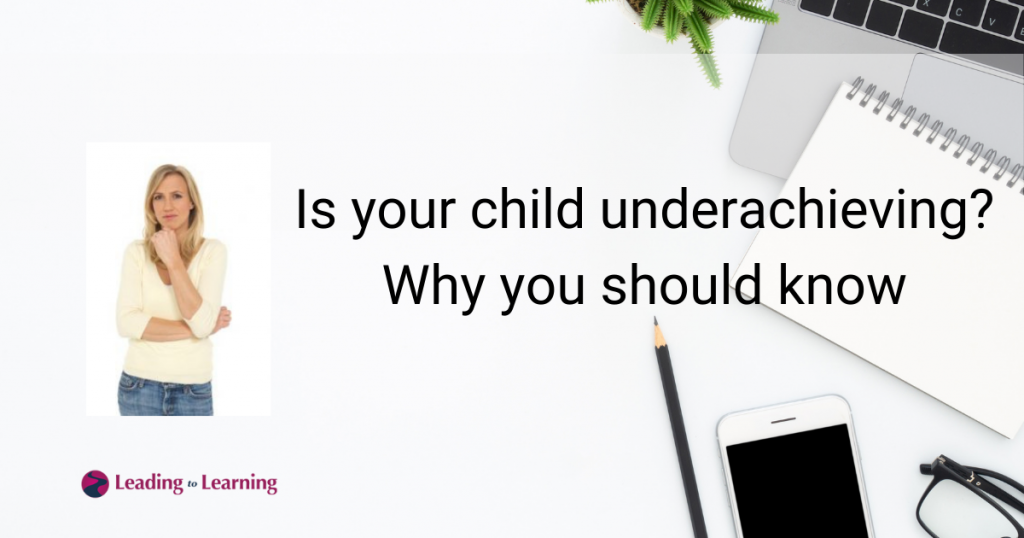
No one knows how many children are underachieving but it is estimated that more than 25% of students could do better!
That is a large number of students who are not reaching their learning potential.
Underachievement can lead to children seeing themselves as failures and placing self-imposed limits on what they can achieve in the future. It occurs when a child’s academic performance is below what is expected based on the child’s ability, aptitude or intelligence.
A child who ‘could do better’ is underachieving.
It can be difficult for teachers to know when a student could do better. Teachers only know the child in the context of school or classroom learning. This is unfortunate because students who are underachieving need help. They need someone to provide support that unlocks their potential.
Kids who underachieve are Seed Pod Kids, waiting for the right situation to help them grow into Superstars. (See my book – From Seedpod to Superstar – https://www.amazon.ca/dp/1712154478 – for detailed information).
They are the ‘grey area’ students who often go unnoticed in class and who are not getting the support they need to blossom. They are the kids who are trying to learn, failing to get the grades they expect, and gradually losing their confidence in their ability to learn.
And, unfortunately, they are the kids who are likely to end up getting in trouble with the law, taking drugs, dropping out of school.
So what can be done to help these students?
We need a three-step process. We must know who they are, decide what help they need, and offer that help.
That is why it is so important to understand the signs of underachievement, signs which are often missed by educators.
But there is good news. Teachers might not know that a child is underachieving but Moms do!
In my experience it is mothers who know when there is something not quite right about their child’s learning. It is mothers who know that their child could do better. It is mothers who know their child better than anyone else.
And it is mothers who can make sure their child gets the help that helps them grow into Superstars.
How do mothers know? Mothers are the ones who pick up on subtle signs such as –
- lack of motivation
- disinterest in school
- not completing homework
- making excuses for failure
- daydreaming
- too much socializing
- making school work a low priority
- failing grades
- not taking satisfaction in their work
- believing they have no chance to succeed
- depression
- isolation
- problem behaviour
- hanging out with a delinquent crowd
All children underachieve at some time in their school career. They may not do their best work 100% of the time and will occasionally receive a poor grade on an assignment. All children go through phases when they let school work slide because of other interests.
But underachievement should be considered a problem if:
The behaviour occurs over a long period of time
- The student gradually falls further and further behind
- He or she is unable to catch up without extra support
- The student is missing important foundational skills needed for future classes
- Marks are well below what can be expected for their grade level
- The problem occurs over more than one school year
- The student is in distress
What causes a student to underachieve?
The many possible reasons for underachievement – lack of self-confidence, feeling overwhelmed and incapable of doing better, lack of self-discipline, low teacher expectations – are the result of two possible causes.
- An unidentified learning challenge
Many children underachieve because of an unidentified learning challenge. We expect children to know how to learn but when a child does not have the basic skills that lead to learning he or she finds it difficult or even impossible to reach their full potential.
- A teaching style that does not match the child’s learning style
Children learn in different ways. When the way they are taught does not match the way they learn best it is difficult for them to use their skills and to show their abilities. As a result, many children either accept and live up to lower expectations or stop trying to learn. Some even drop out of school.
- An emotional issue
Lack of self-confidence, a need to ‘fit in’, disinterest in what is being taught lead to low outcomes.
What can parents do?
If you know, or think, that your child ‘could do better’ you need to take action. Teachers have little time and less energy to help students who are not making a fuss, getting by in class and are not a major problem.
You must give your child the motivation he or she needs to reach their full learning potential. You must help your child reignite their desire to learn.
It isn’t easy but it is possible.
Use this five step process to help make it happen.
- Set the scene for learning.
Create an environment where your child has some control over his or her learning and be ready to connect with what your child is doing and to compliment him or her on their work.
- Create a vision for the future.
Your child’s vision, not yours. Give your child something to work towards.
3. Help your child commit to doing his work.
Don’t let emotions get in the way of facts and recognize and handle excuses.
4. Show your child how to plan for success.
Help your child know how to get their work done
- Follow through
Starting is often the hardest part of getting work done. Show your child how to begin their work.
Using these five steps you can change your underachieving child into one who reaches his or her full learning potential.
And wouldn’t that feel good?
I have a course coming up that shows you exactly how to motivate your child and make learning happen.
Let me know if you want a preview copy







